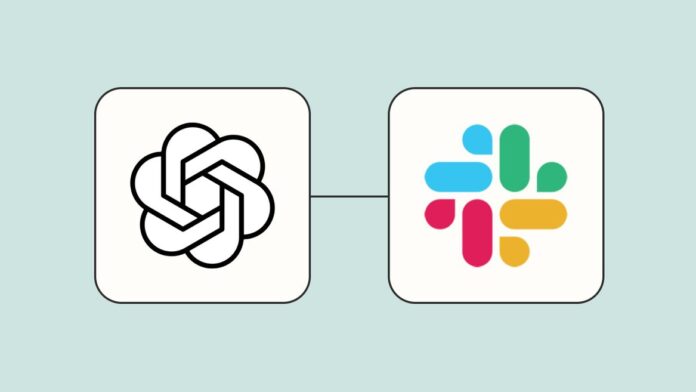Smarter AI Research through Expanded Integrations
The landscape of AI-driven research is evolving rapidly, and ChatGPT Deep Research is leading the charge. Most importantly, this innovative tool now leverages new connectors to provide deeper context and actionable insights for its users. Because these integrations pull data from a variety of sources, they enable both professionals and organizations to enhance the scope and accuracy of their research.
Moreover, AI research is no longer confined to siloed data sets. Instead, the expansion into multi-source integration offers not only broader data collection but also more precise insights. Therefore, the added context helps streamline decision-making processes. This comprehensive approach is supported by resources such as the OpenAI Help Center and Introducing Deep Research, which provide detailed overviews of the underlying technology.
Understanding Deep Research Connectors
Deep Research connectors are specialized integrations that allow ChatGPT to access, analyze, and cite information from a range of sources, including web data and third-party apps like Slack, Canva, Google Drive, Box, GitHub, and SharePoint. Because these connectors pull in real-time data, they help users automate complex research processes by weaving together disparate pieces of information into a cohesive narrative.
Besides that, these connectors advantageously serve as a bridge between isolated data silos, allowing for rich, multi-dimensional insights. Consequently, users can efficiently synthesize content, compare benchmarks, or track incidents derived from a variety of platforms. This innovative approach of Retrieval-Augmented Generation (RAG) ensures that outputs are both current and highly relevant, as further noted by resources on Nate’s Newsletter and BleepingComputer.
New Connectors: Slack and Canva
In a major update, OpenAI has introduced new connectors for Slack and Canva, revolutionizing how users interact with data. With Slack, ChatGPT can now navigate through internal conversation threads, thus enriching research outputs with contextual insights derived from organizational communications. This feature significantly enhances internal data analysis while still upholding robust privacy measures.
Similarly, the Canva integration is a breakthrough for teams requiring a visual component in their research workflows. By incorporating visual project assets, users can create more engaging and informed presentations. Besides that, experiments with Gmail and other platforms are underway, which will soon allow email summaries and search functionalities to be seamlessly integrated into ChatGPT. More details on these innovations can be found on the Time Under Tension site.
Operational Dynamics of ChatGPT Deep Research Connectors
Once a connector is set up, ChatGPT Deep Research performs complex tasks by extracting relevant data from the connected source. For instance, a user might request a comprehensive summary of project updates pulled from Slack messages spanning several months. This integrated approach not only speeds up data collection but also enriches the analysis with contextual background information.
Furthermore, the ability to compare internal statistics against external benchmarks is impressive. Because the tool can pull data from public sources as well as internal reports, teams can quickly identify trends and anomalies. Besides that, compiling design feedback from platforms like Canva ensures that product development is informed by both qualitative and quantitative insights. Such real-time integration boosts productivity and knowledge management across various industries.
Privacy and Security Considerations
Privacy remains a cornerstone of the ChatGPT Deep Research framework. Most importantly, OpenAI assures users that personal or organizational data is not used for training purposes when privacy settings are enabled. This commitment is complemented by rigorous safety tests and ongoing monitoring to ensure data integrity.
Because security protocols are deeply embedded into the design, the system carefully respects cataloged privacy toggles while processing sensitive information. Therefore, organizations can confidently integrate tools like Slack and Canva without compromising on data security, as emphasized by OpenAI’s detailed guidelines and related sources.
Business Use Cases for Deep Research Connectors
The impact of Deep Research connectors on business processes is significant. For example, comprehensive competitive analysis is now feasible by aggregating internal data with public insights. Because the connectors harmonize multiple data streams, organizations can quickly construct a detailed picture of industry trends and internal performance metrics.
Additionally, incident response teams benefit from consolidated data retrieval across several platforms. With these tools, critical issues can be identified and addressed in a timely manner. Besides that, the efficiency in conducting code reviews is enhanced by integrating design specifications, pull request descriptions, and internal conversations. This multi-layered approach means that teams are better equipped to manage knowledge and maintain consistent quality across different domains.
Future Directions and Possibilities
The future of ChatGPT Deep Research is promising, with ongoing developments aimed at further enhancing data connectivity. As OpenAI continues to expand the number of connectors, features like asynchronous research workflows and advanced agentic search capabilities are on the horizon. Most importantly, these improvements are set to redefine how detailed, context-rich research is conducted in various professional fields.
Because continuous innovation is part of OpenAI’s strategy, upcoming tools such as Operator will further automate research processes, increasing both speed and accuracy. Besides that, the deep integration of emerging data sources signals a transformative shift in AI-driven research, urging users to adapt and evolve in an ever-changing digital landscape. For further insights, readers are encouraged to explore resources like Introducing Deep Research and BleepingComputer’s coverage.
Conclusion
In conclusion, ChatGPT’s Deep Research connectors are setting a new benchmark in digital research by combining advanced integrations with robust security. Most importantly, these connectors deliver contextually rich insights from multiple sources, which in turn empower users to make better and faster decisions. Because of its flexible yet secure approach, ChatGPT Deep Research is becoming indispensable for professionals and organizations looking to optimize their research workflows.
Therefore, as these integrations mature and expand, industries across the board will witness improved productivity, enhanced knowledge management, and more dynamic decision-making processes. By keeping a keen focus on both innovation and privacy, ChatGPT Deep Research offers an exciting glimpse into the future of AI-powered research.
References:
- OpenAI Help Center: Connectors in ChatGPT
- OpenAI: Introducing Deep Research
- BleepingComputer:
- Nate’s Newsletter: A Quick Guide to OpenAI’s New Data Connectors
- Time Under Tension: ChatGPT’s Deep Research Connectors



